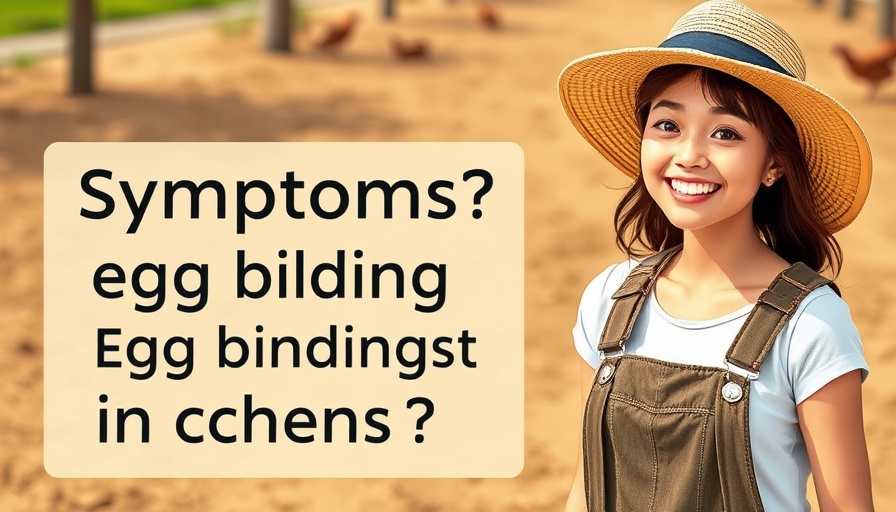
Understanding Egg Binding in Hens
If you're a farmer or a parent raising backyard chickens, you may have come across the term egg binding. This serious condition occurs when a hen struggles to lay her eggs, often leading to discomfort and potential health issues. Being aware of the symptoms is crucial for maintaining your flock’s health, especially in the realm of sustainability.
In 'What Are The Symptoms Of Egg Binding? - The World of Agriculture', the discussion dives into the key indicators of this condition, exploring essential insights that are important for any poultry farmer aiming to maintain a healthy flock.
Key Symptoms to Watch For
The most common sign of egg binding is a distended abdomen. When a hen cannot pass her egg, her belly may appear swollen. Along with this, you might observe the hen straining as if trying to lay the egg but without success.
Another telltale sign is decreased activity. Hens experiencing egg binding often exhibit lethargy, becoming less enthusiastic about moving around. Additionally, you might notice a decrease in appetite, which can be troubling for any poultry owner.
Behavioral Changes Indicating Discomfort
Pay attention to your hens' behavior. Abnormal droppings are common when an egg is stuck. The hen may have wet droppings or none at all. You might also notice a swollen vent area or even a peculiar penguin-like walk that indicates discomfort. Frequent vocalizations, often distressed sounds, can further indicate that your hen may be in pain.
Additionally, look for physical signs such as fluffed-up feathers, which hens use to conserve energy or express distress. If a hen appears depressed, with droopy combs and waddles, this could be another indicator that something is seriously wrong.
Preventing Egg Binding: A Sustainable Approach
Preventative measures can significantly reduce the risk of egg binding. Ensure that your hens receive proper nutrition, particularly calcium, vital for healthy egg production. Maintaining a healthy weight and providing adequate nesting areas are also essential steps in promoting the well-being of your birds. These sustainable practices not only prevent egg binding but enhance the overall health and happiness of your hens, creating a thriving poultry environment.
Take Action Early
Recognizing these symptoms early is vital. If you observe signs of egg binding in your hens, do not hesitate to consult a veterinarian or apply appropriate home remedies. Your proactive approach will ensure a healthier and more productive flock.
 Add Row
Add Row  Add
Add 




Write A Comment